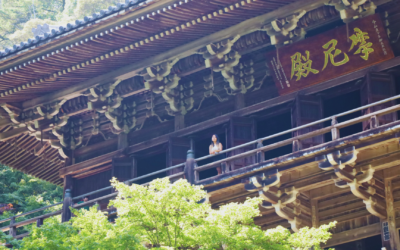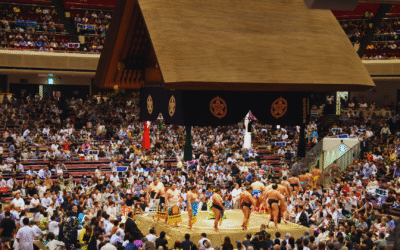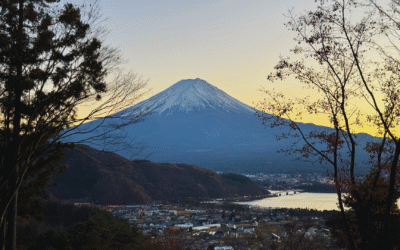Fukui, like many places in the Hokuriku region, is often overlooked when people plan their Japan trips. Most visitors stick to Tokyo, Kyoto, and Osaka, missing out on the unique charm of this underrated gem. But Fukui has so much to offer—stunning nature, deep history, and incredible food—without the tourist crowds you’ll find in Japan’s more famous spots.
This is a place where you can step back in time at ancient samurai ruins, explore one of Japan’s oldest castles, and visit one of the world’s best dinosaur museums. The coastline is unreal, with the dramatic Tojinbo Cliffs making for one of the most breathtaking views in Japan. And then there’s the food—fresh Echizen Crab, crispy Sauce Katsu-don, and refreshing Oroshi Soba—local dishes that will seriously upgrade your trip.
If you’re looking for an off-the-beaten-path adventure, this Fukui guide has you covered. From must-visit cultural spots to epic landscapes and hidden gems, this itinerary will help you experience the best of Fukui without missing a thing! 🚀
Travel Japan Your Way, Without the Hassle
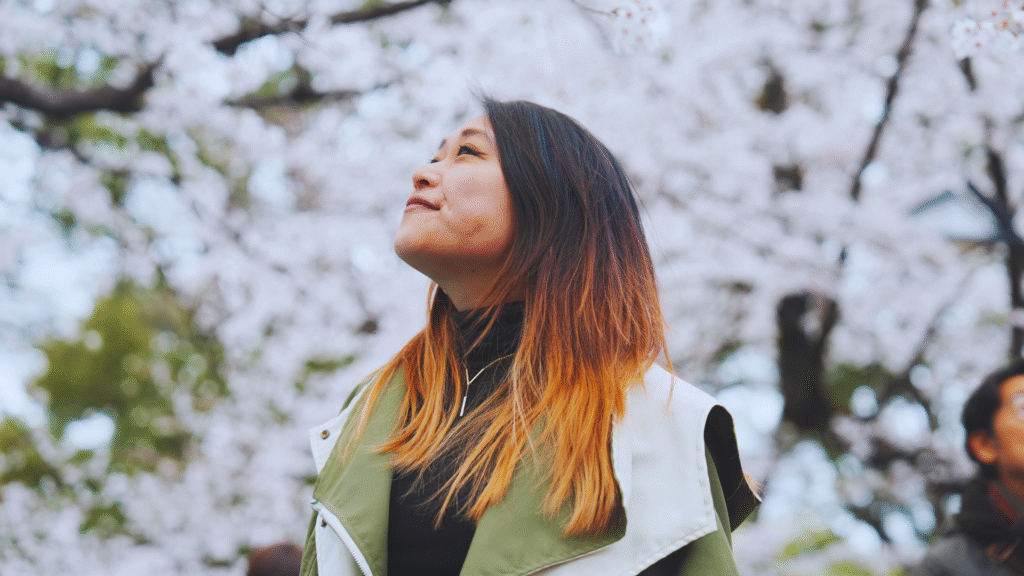
Tired of juggling guidebooks, blogs, and endless tabs? We’ll take care of the details so you don’t have to. Our service creates a personalised Japan itinerary that matches your style — so you can spend less time planning and more time looking forward to the journey.
→ Find Out More About Our Japan Trip Planner
How to Get to Fukui
Getting to Fukui has become easier than ever, thanks to a major update in Japan’s train network. As of spring 2024, the Hokuriku Shinkansen line was extended, connecting Tokyo directly to Fukui Station. This means you can now get from the capital to the heart of Fukui without any transfers, making the journey much smoother.
If you’re travelling from the Kansai region (Osaka, Kyoto), there’s a small change to be aware of. The limited express trains, like the Thunderbird, now terminate at Tsuruga Station. From there, it’s a quick and easy transfer to the Hokuriku Shinkansen for the final leg of the journey to Fukui.
Top Attractions in Fukui
Ichijōdani Asakura Ruins (一乗谷朝倉氏遺跡)

If you’re into samurai history, Ichijōdani Asakura Ruins is a must-visit. This was once a thriving samurai city ruled by the powerful Asakura clan during the Sengoku period (1467–1603). However, after being attacked and burned down in 1573, it was abandoned and left buried for centuries. Today, thanks to extensive excavations, you can walk through the ruins of this lost city, seeing old samurai homes, temples, and gardens just as they were 450 years ago.
One of the highlights is the reconstructed samurai district, where traditional wooden houses have been rebuilt exactly as they looked in the past. Walking through this area feels like stepping into a time machine, giving you a rare glimpse into daily life during the feudal era. The site is huge, so wear comfy shoes and take your time exploring.
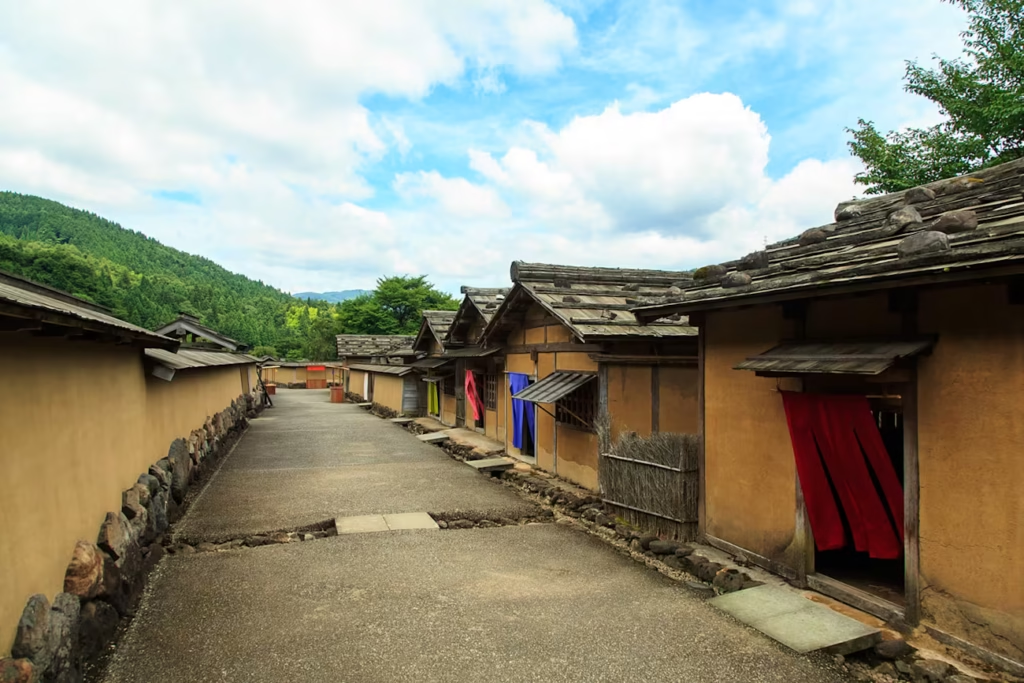
Entry to the ruins is ¥210 for adults and ¥100 for children, but if you want to check out the full reconstructed area, it’s ¥500. If you visit in autumn, the surrounding mountains turn into a sea of red and gold, making it an incredible spot for photographers.
Heisenji Hakusan Shrine (平泉寺白山神社)

Hidden in the mountains, Heisenji Hakusan Shrine is one of Fukui’s most magical spots. The shrine is famous for its moss-covered stone paths, which make it feel like something straight out of a Studio Ghibli film. This ancient place of worship was once a massive religious centre during the Heian period (794–1185), attracting monks and pilgrims from all over Japan. Though much of it was destroyed during a war, the peaceful shrine grounds, stone lanterns, and towering cedar trees remain.

The best way to experience Heisenji is to walk slowly and take in the atmosphere—this is a place meant for reflection and quiet exploration. Unlike the more touristy shrines in Kyoto, it’s rarely crowded, so you can really soak in the calm, spiritual energy. There’s no entrance fee, and it’s especially stunning in early summer, when the moss is at its most vibrant. If you’re into photography, come in the morning when the sunlight filters through the trees for that perfect soft glow.
Maruoka Castle (丸岡城)

Maruoka Castle is one of Japan’s oldest surviving castles, dating back to 1576. Unlike many reconstructed castles in Japan, this one still has its original wooden keep, giving it an authentic, timeworn charm.
It might not be as big or flashy as Osaka or Himeji Castle, but what it lacks in size, it makes up for in historical significance and stunning views. The castle is especially popular in spring when over 400 cherry blossom trees bloom around it, creating an absolutely dreamy scene.
Visitors can climb up to the top of the keep, but be warned—the stairs are steep and narrow (basically ladders), just like they were in the past to make it harder for enemies to invade.
If you’re up for the challenge, the view from the top is worth it, offering a panoramic look over Fukui’s countryside. Entry to the castle costs ¥450 for adults and ¥150 for children, and there’s a small museum nearby showcasing samurai armour and weapons. It’s a great stop for history lovers and castle fans wanting to see a piece of real, untouched Japan.
Echizen Daibutsu (大師山清大寺 越前大仏)

Echizen Daibutsu is home to one of Japan’s largest Buddha statues, standing at 17 metres tall. Built in 1987, it might not have the ancient history of places like Todaiji in Nara, but it’s still impressive.
The sheer size of the Daibutsu (Great Buddha) is jaw-dropping, and the surrounding temple complex is massive, with intricate carvings and towering pillars. The entire area was created to resemble China’s Longmen Grottoes, making it look very different from other temples in Japan.
Since it’s not as well known as other Buddhist sites, you’ll often have the place almost to yourself. You can explore the multi-level temple, walk through peaceful gardens, and take in the serene atmosphere. Entry costs ¥500 for adults and ¥300 for children, and it’s best to visit on a clear day so you can enjoy the views of the mountains from the temple grounds.
Daihonzan Eiheiji (永平寺)

Eiheiji is one of Japan’s most important Zen temples, founded in 1244 by Dogen, the monk who introduced Soto Zen Buddhism to Japan. Unlike other temples that are just tourist attractions, Eiheiji is a working monastery, where monks still live, train, and follow strict Zen practices. Visitors can explore the beautiful wooden halls, long corridors, and serene gardens, all surrounded by towering cedar trees.
The experience at Eiheiji is a bit different from other temples—since it’s an active monastery, there’s a sense of peace and discipline in the air. You’ll see monks quietly walking through the halls, and if you’re lucky, you might even catch them in the middle of a chanting or meditation session.

There’s a ¥500 entry fee, and you’ll need to remove your shoes before entering, so bring easy slip-on shoes for convenience. If you’re interested in Zen Buddhism, you can even take part in a meditation experience, where monks teach you the basics of Zazen (seated meditation).
Eiheiji is beautiful year-round, but it’s particularly stunning in winter, when the temple grounds are covered in snow, making it feel like a hidden retreat from the modern world. If you want a deeper experience, consider staying overnight at one of the Shukubo (temple lodgings) nearby, where you can try vegetarian monk meals and morning meditation.
Yume Ole Katsuyama (はたや記念館 ゆめおーれ勝山)

Yume Ole Katsuyama is a fascinating textile museum that gives you a glimpse into Fukui’s long history of silk production. Housed in a restored 19th-century silk mill, this spot lets you see how silk was once made using traditional wooden looms.
Fukui has been a major silk production hub for centuries, and this museum does an amazing job of preserving that legacy. Even if you don’t know much about textiles, it’s cool to see the giant weaving machines in action, some of which are over 100 years old!
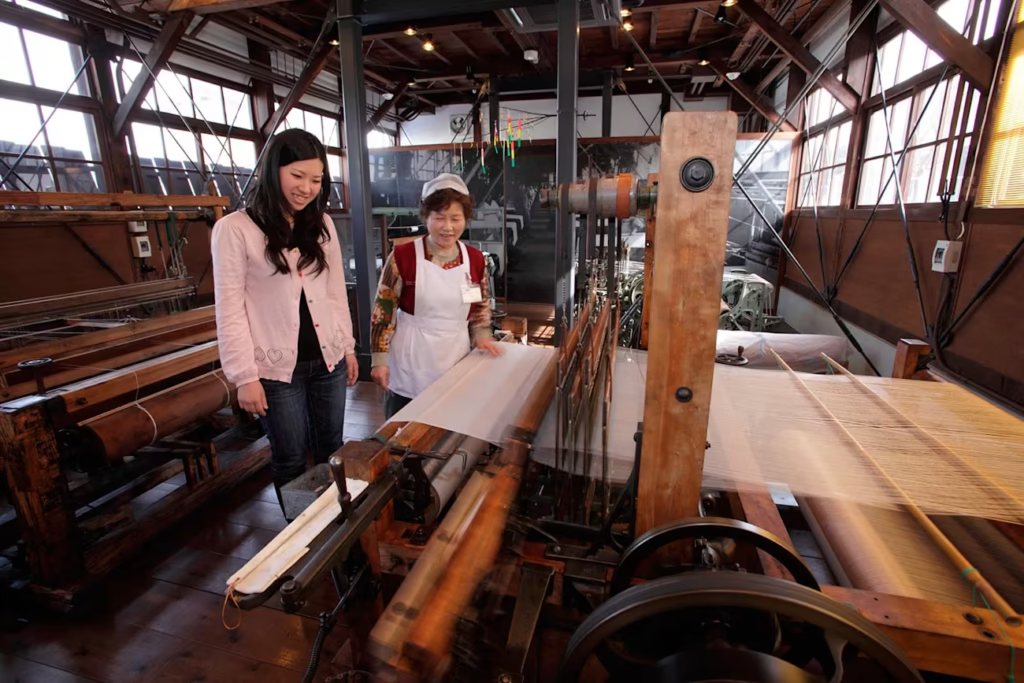
One of the best parts? You can actually try weaving yourself! There are hands-on workshops where you can create your own silk coaster or fabric piece, guided by skilled artisans. It’s a unique experience that lets you take home a handmade souvenir from Fukui.
Entry is ¥300 for adults and free for kids, making it an affordable stop, especially for families. The museum also has a small shop where you can buy local silk products, including scarves and accessories made from the same techniques you just saw. If you’re in Katsuyama visiting the dinosaur museum, this is a great extra stop to add to your itinerary!
Mikuni Minato Retro Street (三国湊レトロ通り)
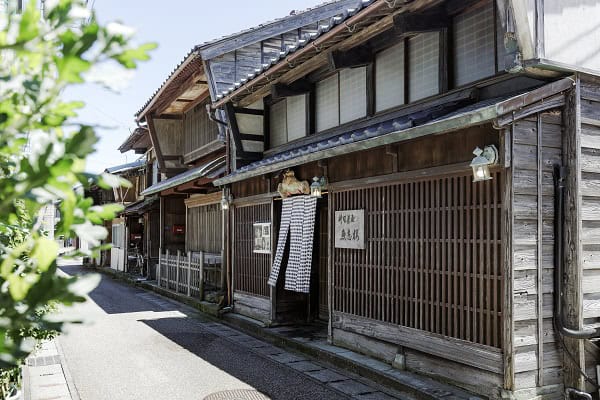
Step into the past at Mikuni Minato Retro Street, a charming old port town that still carries the atmosphere of Japan’s Edo and Meiji eras. Once a bustling trade hub, this area was where merchants and sailors gathered, bringing in goods from all over Japan. Today, it’s known for its well-preserved historic buildings, cute cafés, and quirky little shops that give off a nostalgic vibe.
One of the must-visit spots here is Takeda Sake Brewery, a traditional sake shop where you can try local Fukui sake for free. There’s also old-fashioned sweet shops selling Japanese-style treats like dorayaki (sweet pancakes with red bean filling) and karinto (crispy sugar-coated snacks).
If you’re into photography, you’ll love the wooden townhouses, narrow backstreets, and the scenic canal views, especially in the evening when the streetlights glow softly.
There’s no entry fee, and the whole area is best explored on foot, so take your time and soak in the slow, retro atmosphere.
Fukui Prefectural Dinosaur Museum (福井県立恐竜博物館)

If you love dinosaurs, this is THE place to be. Fukui Prefectural Dinosaur Museum is one of the top dinosaur museums in the world, and for good reason—Fukui is Japan’s dinosaur capital, with many fossils found right here in the region.
The museum is packed with huge skeleton displays, life-sized dinosaur models, and even animatronic dinosaurs that move and roar, making it a fun experience for all ages.
One of the highlights is the massive T. rex skeleton that greets you as soon as you walk in. But it’s not just about looking—this museum is super interactive. You can watch real paleontologists cleaning and studying fossils, or even try digging for your own dinosaur bones in the excavation zone (great for kids!).
The exhibits are really well done, with cool lighting and detailed dioramas that make you feel like you’ve stepped back into the Jurassic period.

The museum is ¥730 for adults, ¥420 for high school students, and ¥260 for kids, making it really affordable considering how much there is to see. If you want to go even deeper into Fukui’s dino history, you can take a shuttle bus from the museum to actual fossil excavation sites, where you can see real dig sites and learn about the dinosaurs discovered here.
Since this is one of Fukui’s biggest attractions, it’s best to visit early in the day to avoid crowds, especially on weekends and holidays.
Tojinbo Cliffs (東尋坊)
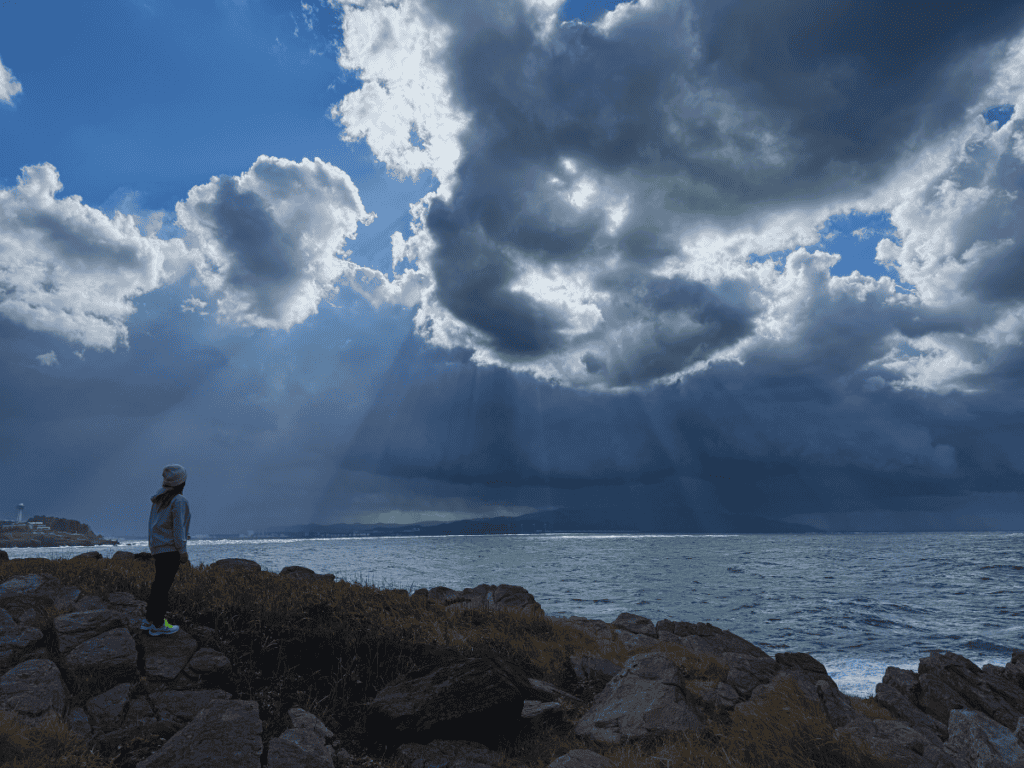
Tojinbo Cliffs is one of Fukui’s most dramatic natural landmarks, featuring a series of rugged, wave-battered rock formations stretching along the coastline. These towering basalt cliffs, some reaching up to 30 metres high, were shaped by volcanic activity millions of years ago, creating a striking landscape that looks almost otherworldly.
What makes Tojinbo special is that this type of rock formation can only be found in a few places worldwide, including parts of Norway and South Korea.
Standing at the edge, you’ll see waves crashing against the cliffs below, sending up dramatic sprays of sea mist. If you’re feeling adventurous, you can climb onto some of the rock ledges (carefully!) for an even better view. A great way to see the cliffs from another perspective is by taking a sightseeing boat tour (¥1,500 per person), which lets you appreciate the scale of the formations from the water. There are also plenty of small food stalls and souvenir shops nearby, where you can try Tojinbo’s famous squid skewers or buy locally made sea salt.

Tojinbo is also known for its mystical and eerie side—it has a reputation as one of Japan’s most haunted spots due to local legends and tragic history. But don’t let that scare you off! Instead, visit during sunset, when the cliffs turn a deep shade of orange and the Sea of Japan glows in the fading light.
The view is absolutely breathtaking and perfect for photography. The cliffs are free to visit, with parking available nearby for ¥500 per vehicle. If you’re traveling by public transport, a bus from Awara Onsen Station will get you there in about 40 minutes.
O Island (雄島)
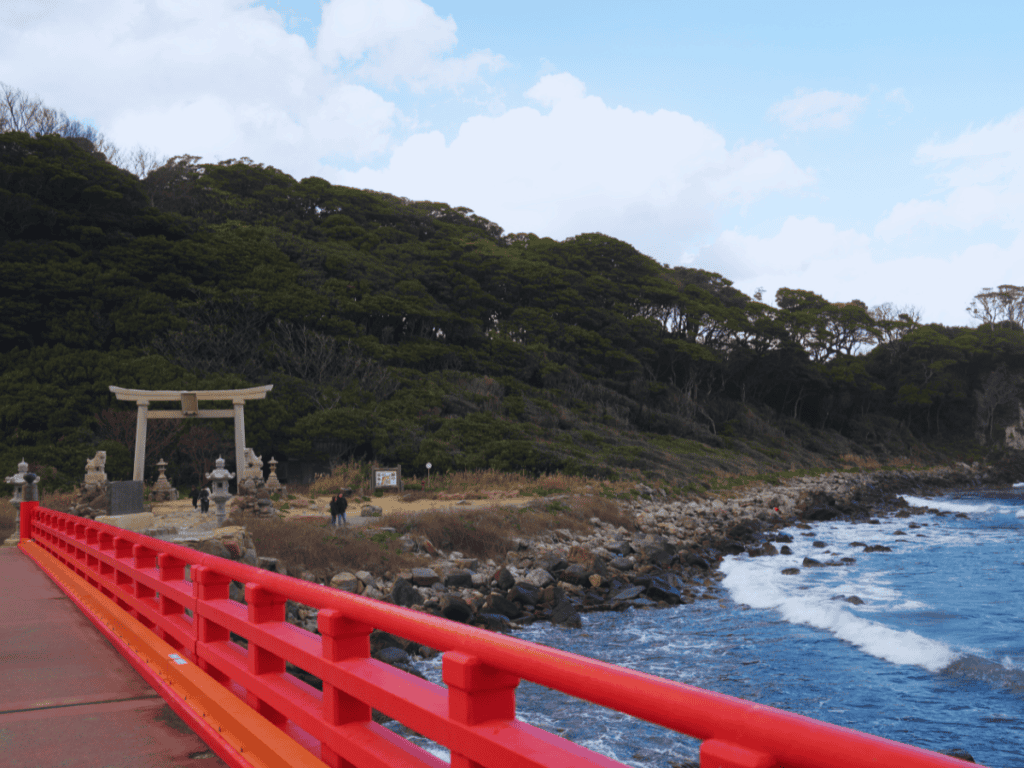
Just a short walk from Tojinbo Cliffs, O Island (or Oshima) is a small, sacred island connected to the mainland by a striking red bridge. Known as the “Island of the Gods,” this place has been a Shinto spiritual site for centuries, and you can still feel that calm, mystical energy as you wander through its quiet, moss-covered pathways.
The island is home to Oshima Shrine, an ancient Shinto shrine hidden among towering cedar trees. The atmosphere here is peaceful and untouched, making it feel like you’ve stepped back in time.
A walk around the island takes about 20–30 minutes, and along the way, you’ll see old stone lanterns, rugged coastal views, and dense forests. Unlike the bustling Tojinbo area, O Island is almost always quiet, making it a great place for a moment of reflection or just to escape the crowds.
The best part? It’s completely free to visit! Since it’s right next to Tojinbo Cliffs, it’s easy to combine both spots in one trip. If you’re into Japanese mythology and hidden spiritual spots, don’t skip O Island—it’s one of Fukui’s best-kept secrets.
Onsens Galore!

If you’re traveling through Fukui, taking a relaxing soak in an onsen is a must. One great place to do that? Awara Onsen, Fukui’s most famous hot spring town, known for its healing mineral-rich waters and traditional ryokan (Japanese inns). This area has been a popular retreat for over 140 years, offering visitors a chance to unwind in an authentic, peaceful setting.
There are plenty of onsen to choose from, ranging from public baths to luxurious private ryokan stays. If you’re short on time, head to Ashiyu Foot Baths, a free public foot spa where you can dip your feet in warm, soothing water while enjoying the atmosphere.

For a more immersive experience, Seiryukaku Ryokan and Grandia Housen are two of the top-rated inns that offer day-use baths (starting from ¥1,000–¥2,000 per visit), along with gorgeous traditional-style rooms if you want to stay overnight.
Awara Onsen is also known for its kaga-ryori (traditional regional cuisine), so if you book a stay at a ryokan, you’ll be treated to an incredible kaiseki meal featuring fresh Echizen Crab, seasonal vegetables, and handmade soba noodles. The town is easily accessible from Fukui City via train (around 20 minutes), making it a perfect quick getaway to relax before heading to your next adventure.
3-Day Fukui Itinerary
Day 1: Spiritual Heritage, Traditional Crafts & Dinosaurs
Heisenji Hakusan Shrine

Start the day at Heisenji Hakusan Shrine, a peaceful and atmospheric shrine hidden in the mountains. The early morning visit allows for a quiet experience, with soft light filtering through the towering cedar trees, making the moss-covered stone paths look even more magical.
Walk along the ancient stone steps, explore the shrine grounds, and take in the serene surroundings. Since public transport is limited, renting a car is the most convenient way to reach the shrine. If taking a bus from Fukui Station, check the schedules carefully, as services are infrequent.
Echizen Daibutsu

From Heisenji Hakusan Shrine, drive about 15 minutes to Echizen Daibutsu, home to one of Japan’s tallest Buddha statues. The temple grounds are vast, with an impressive wooden temple hall housing the massive 17-metre-tall Buddha.
The upper floors of the temple offer panoramic views of the surrounding countryside. Since this spot is less visited by tourists, it’s easy to explore at a relaxed pace without crowds. Take some time to admire the detailed carvings inside the temple and enjoy the peaceful atmosphere before heading to the next stop.
Yume Ole Katsuyama

A short 10-minute drive brings you to Yume Ole Katsuyama, a museum dedicated to Fukui’s silk-weaving history. Here, visitors can see traditional weaving machines in action and learn how Fukui became a major hub for textile production.
For those interested, hands-on workshops are available where you can try weaving a small piece of fabric to take home. Workshops may require advance reservations, so it’s best to check ahead if planning to participate. Before leaving, stop by the museum shop, which sells high-quality silk scarves and accessories made using the techniques displayed in the museum.
Lunch in Katsuyama

For lunch, there are several local restaurants in Katsuyama serving Fukui’s signature dishes. Echizen Oroshi Soba, a buckwheat noodle dish topped with spicy grated daikon radish, is a refreshing and light meal.
Another popular choice is Sauce Katsu-don, featuring a crispy, sauce-coated pork cutlet over rice. Expect to pay around ¥1,000–¥1,500 for a meal. Some restaurants in the area also offer seasonal specialties, such as fresh river fish or locally sourced tempura.
Fukui Prefectural Dinosaur Museum

After lunch, head to the Fukui Prefectural Dinosaur Museum, just a short 5-minute drive away. This world-class museum is a must-visit for anyone interested in dinosaurs, with massive fossil exhibits, life-sized animatronic dinosaurs, and interactive displays.
Visitors can watch paleontologists working on real fossils or try their hand at fossil excavation in designated activity zones. The museum is large, so expect to spend at least two to three hours exploring. Since it can get busy in the afternoons, purchasing tickets in advance is recommended to avoid long wait times.
Roadside Station Dinosaur Valley Katsuyama

Before wrapping up the day, stop by Roadside Station Dinosaur Valley Katsuyama, located just a few minutes from the museum. This roadside station is a fun place to grab souvenirs, including dinosaur-themed gifts, local crafts, and specialty snacks. The shop sells unique items like fossil replicas, dinosaur plush toys, and Fukui-made sweets.
The food court is a great place to try Dinosaur Curry, a black curry dish served with dinosaur-shaped rice, or enjoy a refreshing soft-serve ice cream made with local milk. Outside, there is a viewing deck that offers panoramic views of the Katsuyama area, making for a relaxing end to the day before heading back.
Return to Fukui City

The drive back to Fukui City takes about 40 minutes. If using public transport, check the train and bus schedules in advance, as evening services between Katsuyama and Fukui City can be limited.
Once back in Fukui, there are plenty of great dinner spots offering fresh Echizen Crab (if visiting during crab season), local sushi, or casual izakayas serving grilled seafood and regional specialties.
Day 2: Zen, Samurai History & Onsen Retreat
Daihonzan Eiheiji
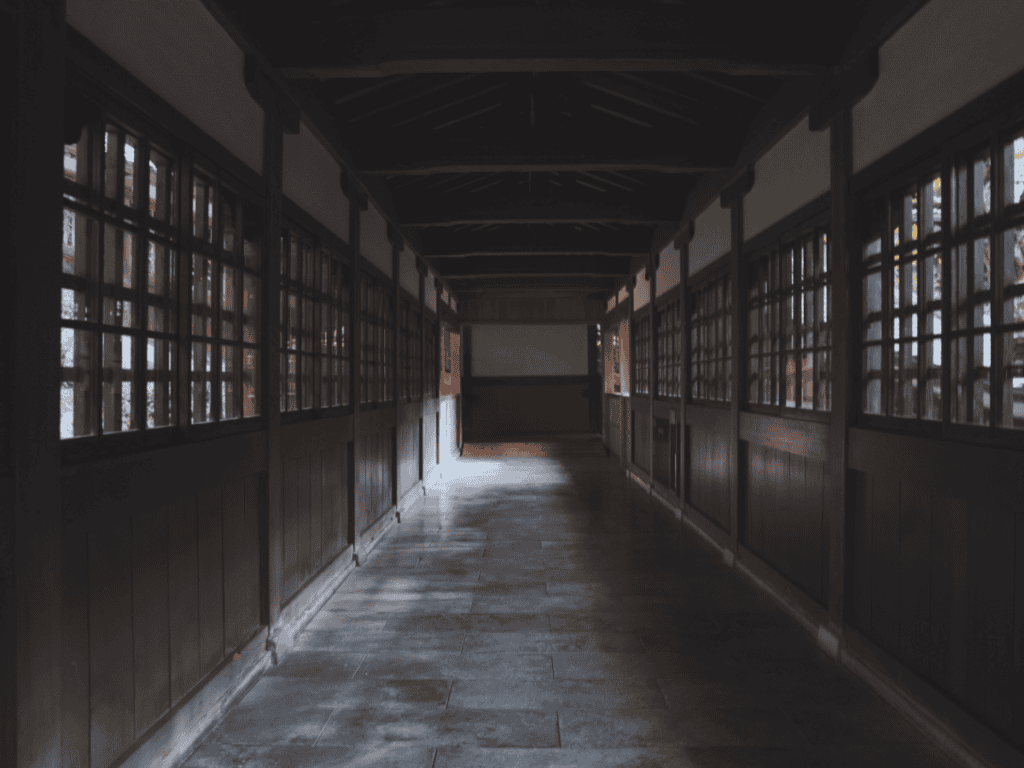
Begin the day at Daihonzan Eiheiji, one of Japan’s most important Zen temples.
If interested, visitors can participate in zazen meditation, where a monk will guide you through the basics of Soto Zen practice. This is a rare opportunity to experience authentic Zen training in a historically significant temple.
There is a small entry fee of ¥500, and shoes must be removed before entering, so wearing easily removable footwear is recommended. The best way to reach Eiheiji is by car, but for those using public transport, there is a direct bus from Fukui Station, which takes about 30 minutes.
Ichijōdani Asakura Ruins

From Eiheiji, drive about 30 minutes to Ichijōdani Asakura Ruins. For a more immersive experience, stop by the Reconstructed Town Area, where buildings have been rebuilt to reflect their original state. Walking through this area feels like stepping back in time, and visitors can even rent traditional kimono or samurai armour for a themed stroll.
Entry to the ruins is ¥210 for adults and ¥100 for children, while the reconstructed district costs ¥500. Autumn is an especially stunning time to visit, as the surrounding mountains are covered in red and gold foliage, making it one of Fukui’s most photogenic spots.
Bon Bons しずく

After a morning of cultural and historical exploration, take a well-deserved break at Bon Bons しずく, a cosy and stylish dessert café known for its beautifully crafted pastries and matcha-based sweets. Located in Fukui City, this café is a great place to relax and enjoy seasonal fruit parfaits, delicate cakes, and matcha tiramisu. The café prides itself on using locally sourced ingredients, including fresh Fukui-grown fruit and high-quality matcha.
One of the must-try items is their signature parfaits, which change depending on the season. In summer, expect flavors like peach and melon, while in autumn, chestnut and persimmon desserts take center stage. If you’re a matcha lover, their matcha lattes and matcha-flavored desserts are among the best in Fukui.
Prices range from ¥800–¥1,500 per dessert, making it a little indulgent but absolutely worth it. Since the café is quite popular, visiting during off-peak hours (early afternoon or weekday mornings) helps avoid long waits.
Check into an Onsen

To end the day on a relaxing note, check into an onsen (hot spring), with Awara Onsen being the most recommended option in Fukui. This historic onsen town has been a retreat for travelers for over 140 years, offering high-quality mineral-rich baths and traditional ryokan stays.
For those looking for a quick onsen visit, there are public bathhouses such as Ashiyu Foot Baths, where you can soak your feet in warm spring water for free. If you prefer a full hot spring experience, many ryokan offer day-use onsens, with prices ranging from ¥1,000–¥2,000 per visit.
For a more immersive stay, book a night at a traditional ryokan like Seiryukaku or Grandia Housen, where you can enjoy private onsen baths, elegant tatami rooms, and a kaiseki dinner featuring seasonal Fukui cuisine.
As the evening sets in, relax in the steaming hot waters, enjoy a leisurely stroll through Awara Onsen’s charming streets, or simply unwind in your ryokan while savoring a multi-course Japanese meal featuring Echizen Crab, fresh seafood, and locally grown vegetables. Ending the day in an onsen retreat is the perfect way to recharge before another day of exploring Fukui.
Be sure to check out our guide on Japanese hot springs before your visit:
Day 3: Coastal Views, Art, and Samurai Legacy
Tojinbo Cliffs
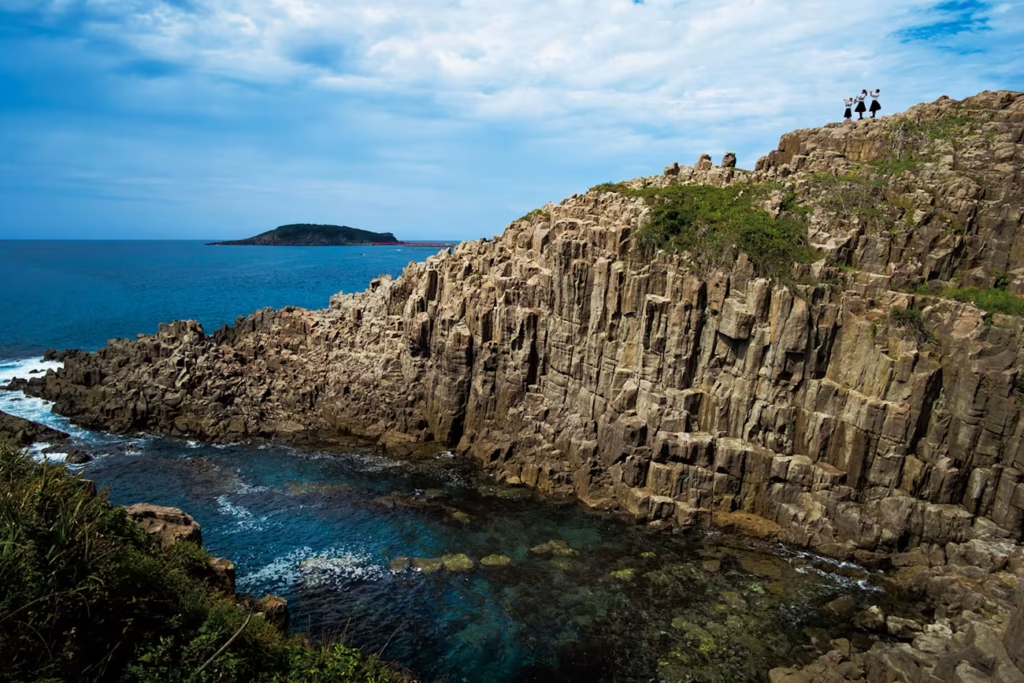
Start the final day of your Fukui trip at Tojinbo Cliffs, one of Japan’s most stunning coastal landscapes. The dramatic basalt cliffs, shaped by volcanic activity over millions of years, rise sharply above the Sea of Japan, creating an awe-inspiring view. Strong waves crash against the rock formations, sending up sea spray, and on clear days, you can see all the way to the distant horizon.
Take time to walk along the cliffside trails, where you’ll find various viewpoints offering different angles of the cliffs and the ocean below. For an even better experience, consider taking a sightseeing boat tour (¥1,500 per person), which gives you a breathtaking perspective of the cliffs from the water. If you’re feeling adventurous, you can climb onto some of the rocky outcrops (carefully!), but be mindful of slippery surfaces.
Around the cliffs, there are small food stalls selling freshly grilled squid, seafood rice bowls, and local Fukui snacks, making it a great spot for a quick morning bite.
O Island
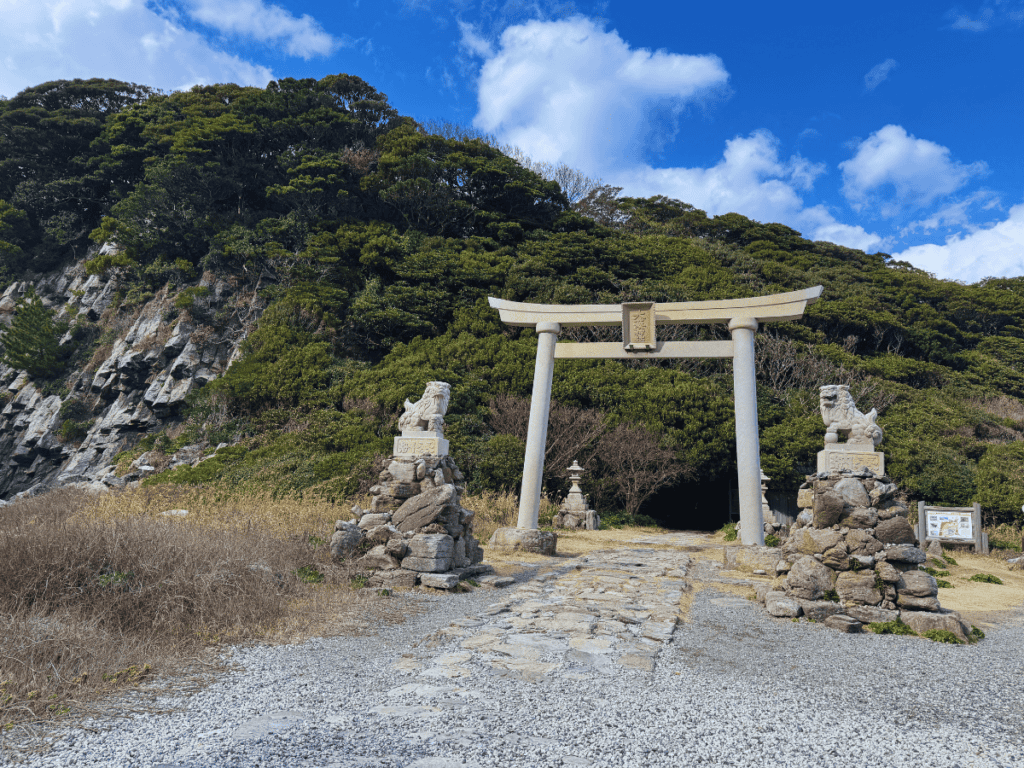
A short walk from Tojinbo, O Island (Oshima) is a peaceful and spiritually significant island connected to the mainland by a striking red bridge. Known as the “Island of the Gods,” it has long been a Shinto pilgrimage site, and its quiet, moss-covered pathways feel untouched by time.
Walking the loop trail around the island takes about 20–30 minutes, with stops at Oshima Shrine and various stone lanterns hidden among the dense trees. Unlike the busy cliffs nearby, this island is almost always quiet, making it a perfect spot for reflection and slow exploration.
Since there are no shops or restaurants on the island, bringing a drink or snack before heading in is a good idea. The walk across the red bridge leading to the island is also a great photo spot, especially during sunrise or sunset.
Kanaz Forest of Creation

After exploring the coastline, drive about 40 minutes inland to Kanaz Forest of Creation, an open-air art park hidden in the woods. This sprawling creative space is home to over 20 unique art installations, blending modern artwork with the natural surroundings. Unlike traditional museums, the sculptures and exhibits here are scattered throughout the forest trails, making every turn feel like a discovery.
One of the best aspects of this spot is its interactive workshops, where visitors can try their hand at traditional crafts like pottery, glass-blowing, or woodwork.
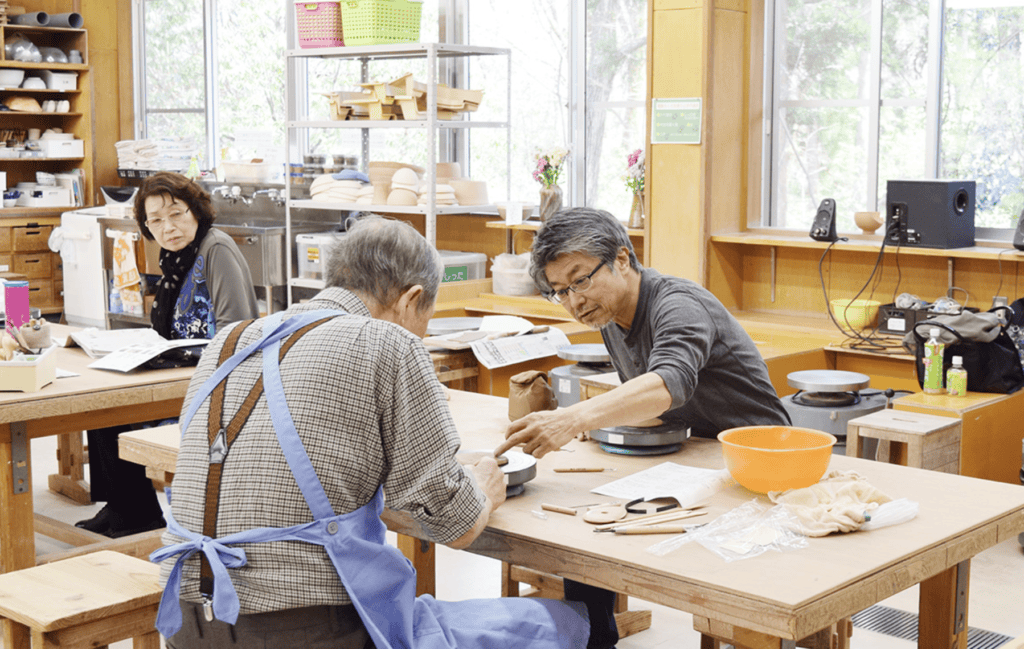
The instructors here provide step-by-step guidance, making it easy for beginners to craft something special, even if you have no prior experience. Prices vary depending on the activity, but most workshops cost around ¥2,500–¥4,000.
If you’ve never tried Japanese-style pottery or ceramic painting, this is a great place to experience it in a relaxed and welcoming environment. Be sure to check their website or call ahead for available workshops, as some require reservations.
Experience Japan, Not Just Read About It
Guidebooks can only take you so far. To really connect with Japan, nothing beats trying cultural experiences first-hand — like Fukui’s pottery, glass-blowing, and woodwork. We’ll help you find and book experiences that make your trip truly unforgettable.
→ Explore Authentic Cultural Experiences in Japan
Maruoka Castle
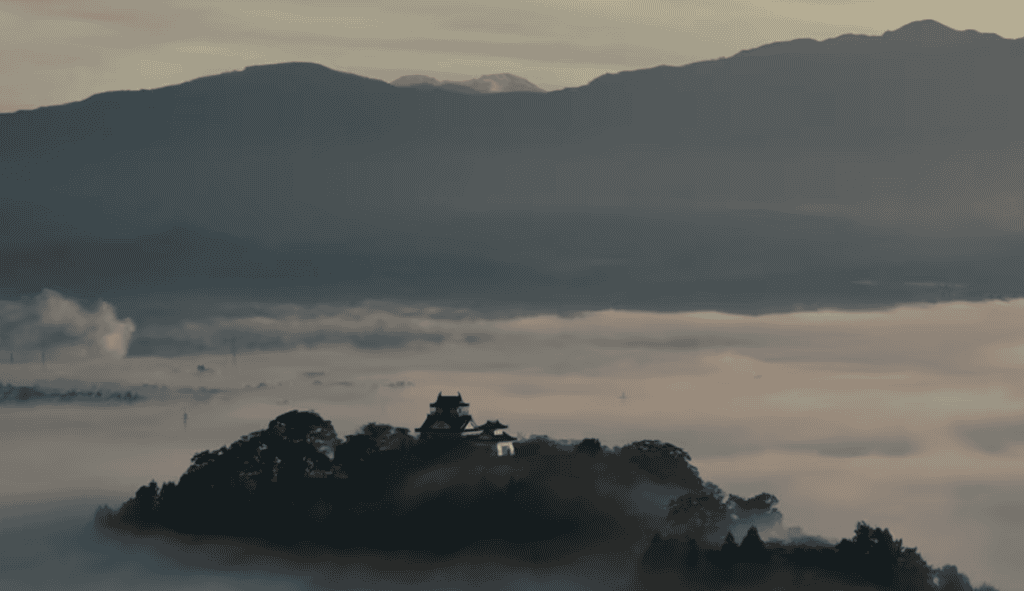
End the day with a visit to Maruoka Castle, one of Japan’s oldest surviving castles. Unlike many castles in Japan that have been rebuilt, Maruoka still retains its original wooden keep, dating back to 1576. The castle’s steep and narrow wooden staircases were designed as a defense mechanism, making the climb to the top a fun challenge. Once at the top, the 360-degree panoramic view of Fukui’s countryside is absolutely worth it.
During spring, over 400 cherry trees surrounding the castle bloom, creating an incredibly scenic setting. Even outside of cherry blossom season, the historic stone walls and well-preserved interior make this a must-visit site for history lovers.

Entry to the castle is ¥450 for adults and ¥150 for children, and there is a small museum nearby showcasing samurai armor, weapons, and historical artifacts.
After exploring the castle, head back to Fukui City for your final dinner in the region, with options ranging from casual izakayas to kaiseki-style dining featuring local Fukui specialties. Whether ending the trip with fresh Echizen Crab, handmade soba noodles, or grilled seafood, Fukui’s food scene is the perfect way to wrap up an adventure-filled three days.
Start Your Fukui Adventure Today

Fukui might not be the first place that comes to mind when planning a trip to Japan, but that’s exactly what makes it so special. Away from the crowded tourist hotspots, it offers breathtaking coastal views, immersive historical sites, hands-on cultural experiences, and some of the best seafood in Japan.
Whether you’re exploring ancient samurai ruins, standing at the edge of the dramatic Tojinbo Cliffs, or soaking in a traditional onsen, Fukui is full of surprises that make every moment feel like a hidden discovery.



